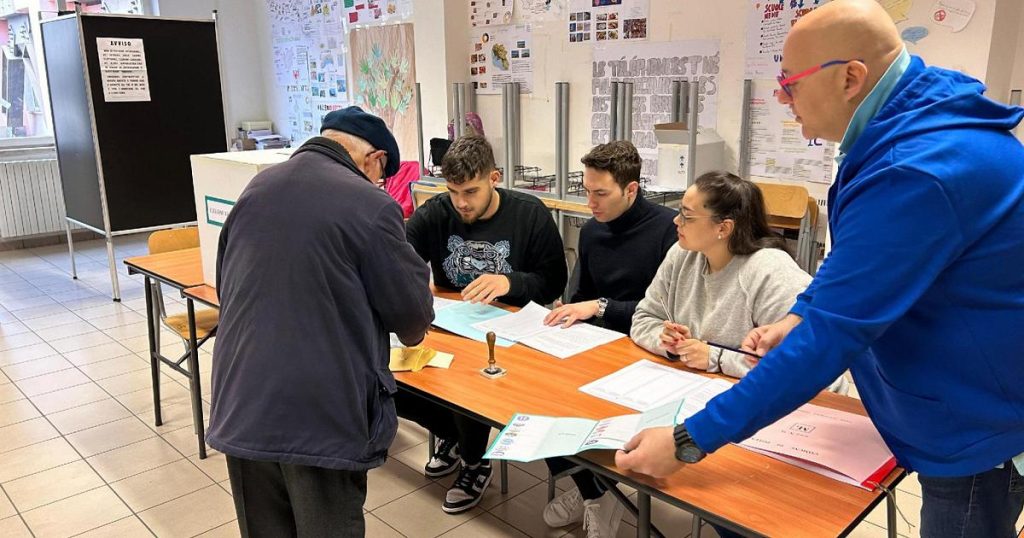The turnout for the regional elections in Basilicata has decreased compared to five years ago. Only a little over 9.12% of the electorate had voted by 12 pm, down from 13.31% in the previous elections. In Potenza, 8.4% of voters had cast their ballots, compared to 13.42% in 2019, while in Matera, the turnout was 9.74% (down from 13.08%). The voting took place in 682 polling stations across 131 municipalities in Basilicata, with four hospital sections also participating in the elections. There will be no split votes or runoff, and the candidate with the most votes will lead the Region. The results will be announced on Monday evening.
The electoral body in Basilicata is larger than the resident population, a result of demographic decline. With 567,947 eligible voters compared to the region’s population of 537,577 residents, this discrepancy is due to residents registered abroad, as Basilicata has a history of emigration. This phenomenon of the electoral body exceeding the resident population has been observed since 2013, and the gap is widening as demographic decline continues. This unique situation reflects the changing demographics in the region and poses challenges for the electoral process.
The three candidates vying for the presidency in Basilicata represent different political affiliations. Vito Bardi, supported by the center-right coalition, seeks re-election with an expanded coalition that includes centrist parties like Italia Viva and Action along with the support of Marcello Pittella, who previously headed the region from 2013 to 2019 before resigning due to involvement in a local scandal. The centrist coalition backing Bardi includes Forza Italia, Fratelli d’Italia, Lega, and other regional parties. On the other hand, Piero Marrese, representing the center-left coalition, has garnered support from parties like the Democratic Party, Five Star Movement, and others. Lastly, Eustachio Follia, endorsed by the pan-European party Volt, stands as a third candidate in the race.
The electoral law in Basilicata dictates a single-round voting system where the candidate with the majority (even relative) of votes becomes president. There is no split voting, so voters can choose a preferred list or vote solely for a presidential candidate, adhering to gender quota preferences. A majority bonus is allocated to the winning coalition, ranging from 11 to 14 seats depending on the candidate’s share of votes. Additionally, an 8% threshold applies to coalitions and 3% for unaffiliated lists, with allowances for overperforming coalitions to secure seats. The region is divided into two electoral districts, Potenza and Matera, electing a total of 20 regional councilors and the president.
In conclusion, the regional elections in Basilicata have seen a decline in voter turnout, highlighting the challenges of engaging the electorate in the region. The unique situation where the electoral body surpasses the resident population underlines demographic shifts and emigration trends in Basilicata. The three candidates representing different political ideologies face off in a single-round voting system where the majority victor will lead the Region. The electoral process’s complexities, including gender quota preferences and majority bonuses, underscore the intricacies of the political system in Basilicata. The results of the elections will shape the region’s governance and policies moving forward, impacting the lives of its residents and addressing the issues facing Basilicata.


